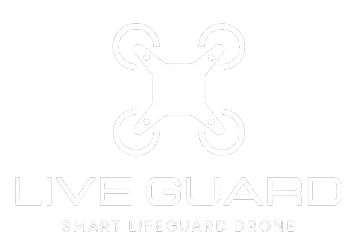Introduction
Rescue operations have always been vital in saving lives during emergencies, whether on land, sea, or in the air. The success of these operations often depends on swift and effective intervention. However, in recent years, technology has dramatically changed the way rescue efforts are conducted, making them faster, more precise, and far more efficient. From advanced drones to AI-driven systems, modern technology is providing rescuers with tools that enhance their ability to respond to life-threatening situations quickly and effectively.
Gone are the days when rescuers had to rely solely on human judgment and basic equipment. Today, technologies like unmanned aerial vehicles (UAVs), real-time data analytics, GPS tracking, and even robotics are integrated into rescue operations to ensure that no one is left behind in times of crisis. These innovations not only improve the success rate of rescue efforts but also reduce the risks for both victims and rescuers alike. In this article, we will explore how modern technology is revolutionizing rescue efforts and why it’s becoming an essential part of emergency response strategies.
Key Technologies Driving the Future of Rescue Operations
Modern technology is a game-changer in rescue operations, enabling faster, safer, and more accurate interventions. The integration of innovative tools has allowed rescuers to respond to emergencies in ways that were previously unimaginable.
Drones: Revolutionizing Aerial Search and Rescue
Drones, or unmanned aerial vehicles (UAVs), are playing a pivotal role in rescue operations, particularly in large-scale search and rescue missions in hard-to-reach areas. Equipped with high-resolution cameras, thermal sensors, and GPS tracking, drones can quickly locate victims, even in dense forests, mountains, or disaster-stricken regions. These drones can scan vast areas in a short amount of time, providing rescuers with real-time visual data, enabling them to prioritize search areas more effectively.
One of the key advantages of drones in rescue missions is their ability to access areas that are unsafe for human responders. In the event of natural disasters such as earthquakes, floods, or wildfires, drones can be deployed to assess the damage and identify potential survivors without putting rescuers at risk. Furthermore, drones equipped with thermal imaging can detect heat signatures, helping locate individuals who may be hidden or unconscious.
AI-Driven Analytics for Faster Decision-Making
Artificial intelligence (AI) is helping rescue teams make better-informed decisions during emergencies. By analyzing real-time data from various sources, such as drones, sensors, and rescue equipment, AI systems can assess the situation and provide predictive insights. For instance, AI can process satellite images and environmental data to forecast the movement of floods or wildfires, allowing rescuers to plan their efforts more effectively and allocate resources where they are needed most.
AI is also being used to assist in identifying patterns those human responders may miss. In search and rescue operations, AI can analyze footage from drones or CCTV cameras to recognize signs of life or detect unusual movement, significantly improving the accuracy and speed of the search. Additionally, AI-powered tools can help prioritize rescue efforts based on the severity of the situation and the likelihood of successful outcomes.
Robotics: Assisting in Dangerous or Challenging Environments
Robots are increasingly being deployed in rescue operations, particularly in situations where human intervention would be too dangerous or impractical. These robots are designed to navigate hazardous environments, such as collapsed buildings, flooded areas, or war zones, to search for survivors. Some robots are equipped with specialized tools to lift debris or provide medical aid, while others are used for reconnaissance and to gather critical data for rescue teams.
For example, in the aftermath of an earthquake, rescue robots can be sent into collapsed buildings to search for survivors, even in spaces that are too narrow for humans to access. These robots are often equipped with cameras, microphones, and sensors to detect movement or signs of life, providing rescuers with valuable information without putting themselves in harm’s way.
2.Improve Rescue Efforts with Real-Time Data and Communication Tools
The integration of real-time data and communication tools has drastically improved the effectiveness of rescue operations. Timely access to information is crucial in emergencies, and technology is enabling a faster flow of information between rescuers, victims, and command centers.
GPS Tracking for Improved Victim Location
GPS technology has been a game-changer in locating victims during rescue operations. In urban environments, GPS-enabled devices or apps can help rescue teams pinpoint the exact location of individuals in distress, whether they are trapped under rubble, stranded in floodwaters, or lost in remote areas. GPS trackers can be worn by individuals or carried in emergency kits, and their data can be transmitted to rescue teams in real time.
In addition, search and rescue teams can use GPS coordinates to create detailed maps of the disaster area, allowing them to efficiently plan their rescue routes and prioritize the most critical locations. In remote or wilderness environments, where traditional communication methods may be unreliable, GPS tracking ensures that rescuers can reach victims more quickly and accurately.
Real-Time Communication for Coordinating Rescue Efforts
In any rescue operation, communication is essential. Today’s communication technologies, such as satellite phones, mobile apps, and dedicated rescue networks, allow rescuers to stay connected even in the most challenging environments. Real-time communication tools ensure that rescue teams can coordinate their efforts, share vital information, and provide updates to command centers.
These communication tools are especially valuable during large-scale disasters, where multiple teams are working in different areas. By providing seamless communication, technology ensures that rescue efforts are well-coordinated, which can significantly improve response times and save lives.
Wearable Technology for First Responders
Wearable technology is also playing an important role in improving the safety and efficiency of rescue efforts. For first responders, wearable devices equipped with sensors can monitor vital signs, such as heart rate, body temperature, and stress levels. This data can be transmitted to command centers or medical personnel, ensuring that rescuers receive immediate assistance if they experience physical distress during a mission.
Additionally, wearables can provide responders with real-time situational awareness, alerting them to hazards in the environment, such as unstable structures or rising floodwaters. This allows rescuers to make more informed decisions and reduce their exposure to risks while performing life-saving tasks.
Want to learn more about how technology is revolutionizing emergency response?
Explore our other blogs to stay updated on the latest innovations in rescue technology and the future of safety in critical situations.
Conclusion
Modern technology is transforming rescue operations by making them faster, more precise, and safer for both rescuers and victims. Drones, AI-driven analytics, robotics, and real-time data are just a few examples of the tools that are reshaping the way we approach emergency situations. With these innovations, rescue teams can respond more efficiently to natural disasters, accidents, and other life-threatening scenarios. As technology continues to evolve, the future of rescue operations looks even more promising, offering new ways to save lives and minimize risks. By leveraging these advanced tools, we can ensure that help arrives faster and more effectively, ultimately making the world a safer place for everyone.



